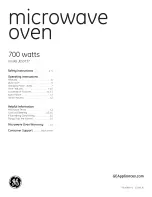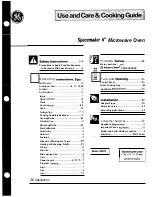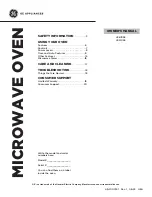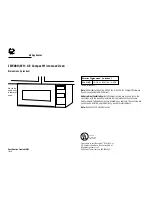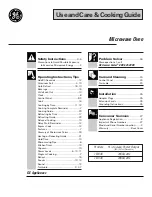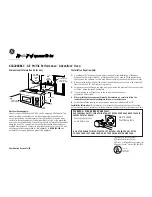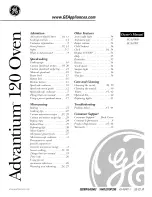
21
FOOD CHARACTERISTICS
The speed and evenness of microwave cooking is affected by the foods themselves. Microwaves penetrate foods
to a depth of 1.8 to 3.7cm (3/4 to 11/2 inches) on all surfaces; top, bottom and sides. The interior of foods greater
than 5cm(2-inches) in diameter heats by conduction, as it does in conventional cooking. Foods with high water,
fat or sugar content respond quickly to microwave energy. Understanding the way food characteristics influence
cooking will help you enjoy the benefits of microwave cooking.
Quantity: The amount of food placed in a microwave oven has a direct effect on the cooking time. Small amounts
of food or liquid require less cooking time than larger amounts of the same substance. That’s because small
quantities receive concentrated amounts of microwaves. As the quantity increases, concentration decreases.
Size: Small pieces cook faster than large ones. To the speed cooking, cut pieces smaller than 5cm (2-inches), so
microwaves can penetrate to the middle from all sides. Pieces which are similar in size and shape will cook more
evenly.
Shape: Many foods are uneven-like chicken, ribs or broccoli. The thin parts will cook faster than the thick parts
while uniformly thick foods cook evenly.
To compensate for irregular shapes, place thin pieces toward the center of the dish and thicker pieces toward the
edge of the dish.
Round shaped foods cook faster than square or oblong shapes.
Starting Temperature: Frozen or refrigerated food will takes longer to cook than food at room temperature. Room
temperatures vary with the time of year, therefore cooking times may be longer on cold winter days.
Bone and Fat: Because bones conduct heat, the side of meat with the bone will cook first, while boneless cuts cook
slower but more evenly. Fat attracts microwaves.
Large roasts, turkeys and chickens brown during prolonged cooking as their natural fats are drawn to the surface.
The centers of these foods are cooked by heat conduction.
Moisture Content: Microwave are attracted by moisture. Naturally moist foods microwave better than dry foods.
Add a minimum of liquid to moist foods, as excess water slows cooking. Prick foods with skins like those on
potatoes or squash allowing internal steam to escape.
Density: The density of food determines how easily the microwaves can penetrate and how quickly it will cook.
Porous foods, like ground beef or mashed potatoes, microwave faster than dense ones like steak or whole
potatoes.
Piercing: Steam builds up pressure in foods which are tightly covered by a skin or membrane Pierce potatoes, egg
yolks and chicken livers to prevent bursting.































